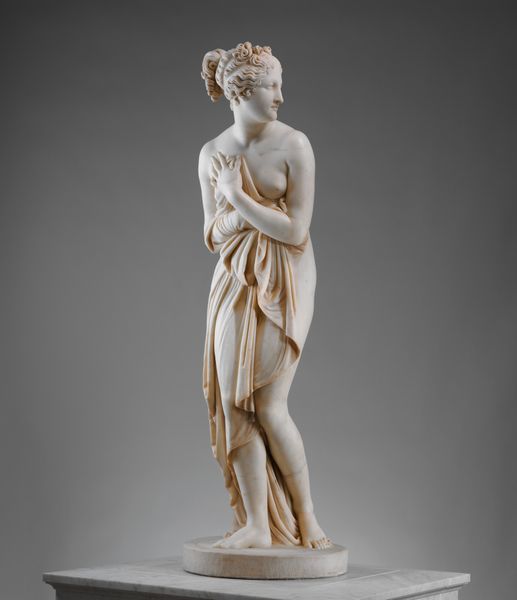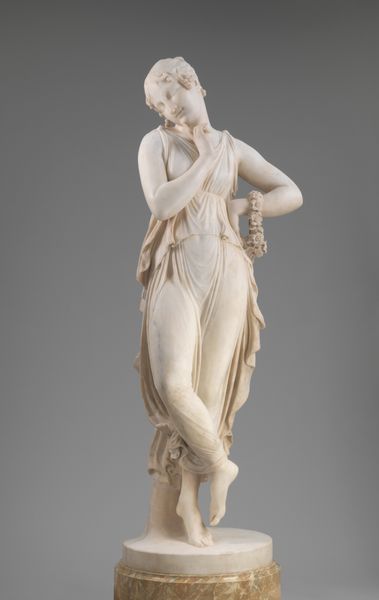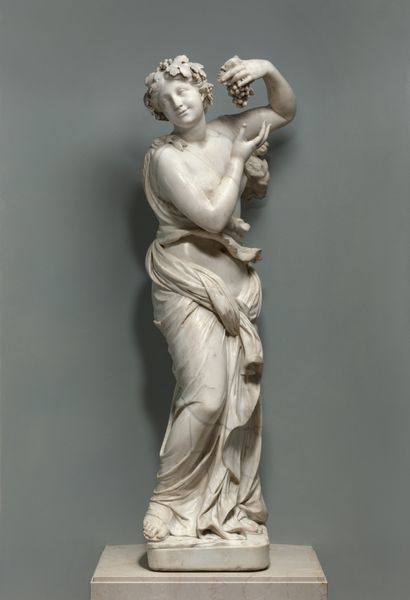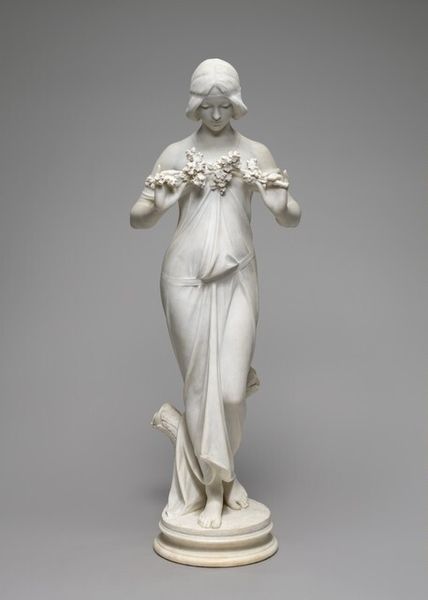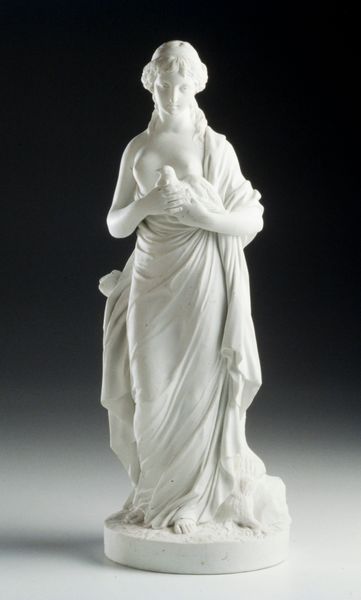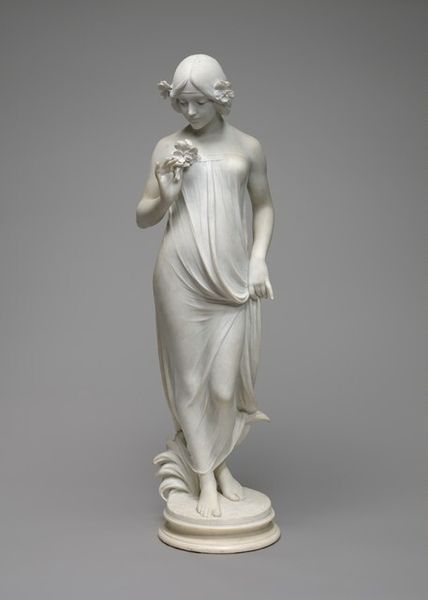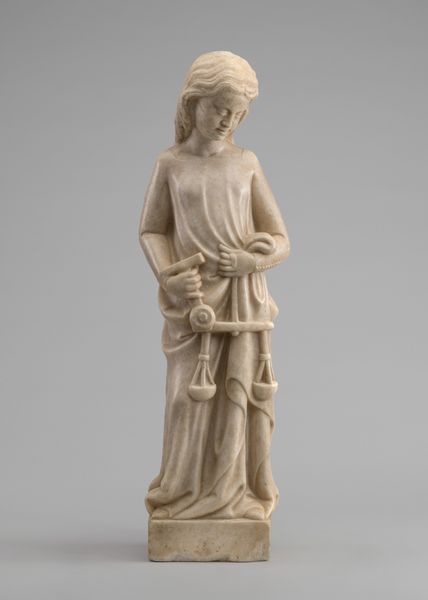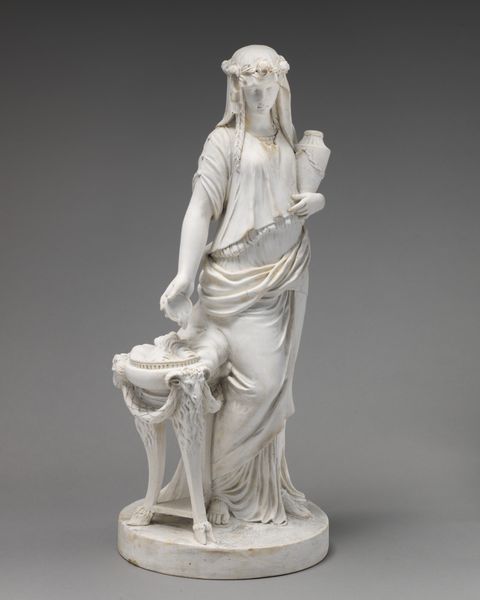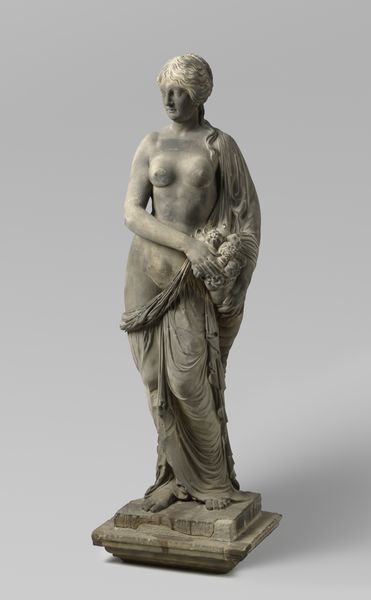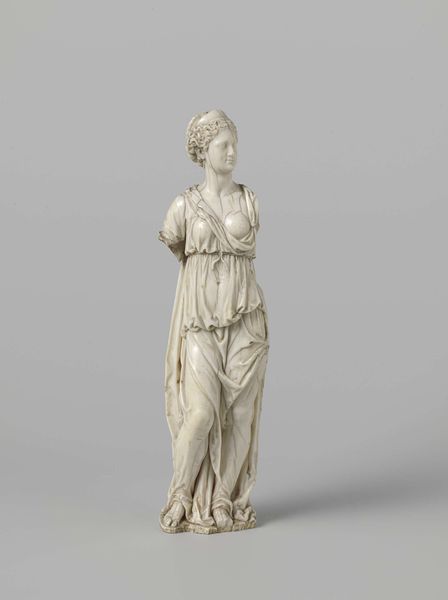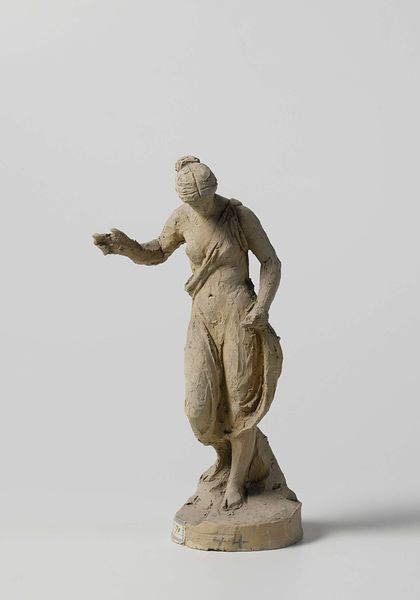
Copyright: Public domain
Edmonia Lewis carved this marble sculpture of Hagar, a biblical figure, sometime in the 19th century. Here, Hagar's clasped hands and downward gaze are potent symbols of despair, reflecting her abandonment in the desert. This expression of sorrow and supplication is a timeless pose, echoing in countless artistic representations of grief across cultures. Consider the "Pietà," where Mary cradles the deceased Christ – a similar gesture conveys profound mourning. These shared motifs are not mere coincidences. They tap into what I call "social memory" – a collective, often subconscious, reservoir of images and emotional expressions. The image of clasped hands transcends religious and cultural boundaries, acting as a powerful vehicle for human emotion. It stirs something deep within us because it resonates with the universal experience of suffering. Ultimately, the emotional power of Hagar's pose lies in its ability to connect us to shared human experiences, revealing the cyclical nature of suffering and hope throughout history.
Comments
No comments
Be the first to comment and join the conversation on the ultimate creative platform.
